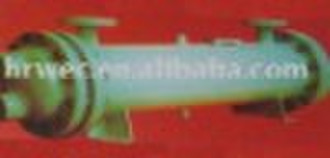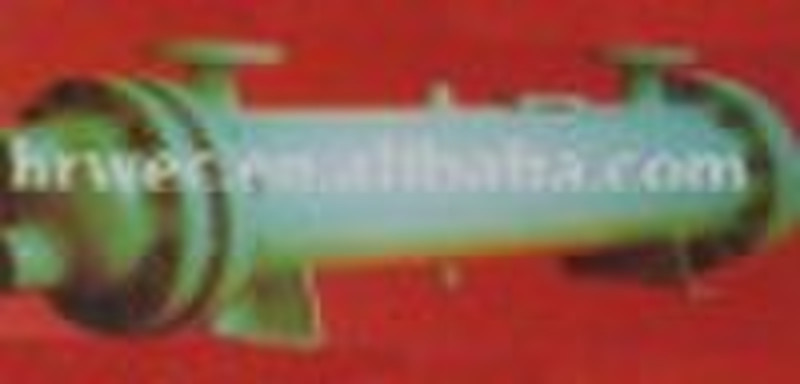Catalog
-
Catalog
- Agriculture
- Apparel
- Automobiles & Motorcycles
- Beauty & Personal Care
- Business Services
- Chemicals
- Construction & Real Estate
- Consumer Electronics
- Electrical Equipment & Supplies
- Electronic Components & Supplies
- Energy
- Environment
- Excess Inventory
- Fashion Accessories
- Food & Beverage
- Furniture
- Gifts & Crafts
- Hardware
- Health & Medical
- Home & Garden
- Home Appliances
- Lights & Lighting
- Luggage, Bags & Cases
- Machinery, Hardware & Tools
- Measurement & Analysis Instruments
- Mechanical Parts & Fabrication Services
- Minerals & Metallurgy
- Office & School Supplies
- Packaging & Printing
- Rubber & Plastics
- Security & Protection
- Service Equipment
- Shoes & Accessories
- Sports & Entertainment
- Telecommunications
- Textiles & Leather Products
- Timepieces, Jewelry, Eyewear
- Tools
- Toys & Hobbies
- Transportation
Filters
Search
Tubular Heat Exchanger
Harbin, China
86-451-82365024

Yanfeng Li
Contact person
Basic Information
| Place of Origin | Heilongjiang China (Mainland) |
|---|
1.Overview The tubular heat exchanger is a type of dividing wall heat exchanger which uses the wall of the tube bundles (enclosed inside the tube) as the heat transfer surface. It has a wide range of applications, because of its simple and solid structure, reliable and flexible operation, various and wide material selections, strong adaptability, strong high temperature and high pressure resistance ability. Tubular heat exchanger is widely applied in the chemical, petroleum, power, atomic energy and other industrial sectors. Its main function is to ensure the media be in the process required temperature as well as improve the energy efficiency. 2. Arch principle and characteristics. The tubular heat exchanger is composed by tube cabinet, shell, tube buddle and other major components. The tube buddle is the essential part of the tubular heat exchanger. As the thermal component, the heat exchange tube directly determines the thermal performance. In addition, another basic component – the traverse baffle (or support plate) also has direct affect on the thermal performance. Tubular heat exchanger belongs to the dividing wall type heat exchanger, the fluid channel formed inside the heat exchange tube is called tube pass, and in the other side the fluid channel formed outside the heat exchange tube is called shell pass. When two fluid flows with different temperature pass through the tube pass and the shell pass respectively, the high temperature fluid will pass the heat to the lower temperature fluid by the wall of the heat exchange tube, so the high temperature fluid is cooled as well the low temperature fluid is heated, and then the two-fluid heat transfer process is achieved. 3. Types of Tubular Heat exchanger (1). Fixed-tube heat exchanger Made up by tube cabinet, tube sheets, heat transfer tube, shell, traverse baffle (or support plate), rod, distance tube, etc. The tube sheets and the shell are welded together. Both sides of the tube sheets are fixed. It can apply single tube pass or multi tube pass, the tube buddle can not be removed, but it can be extended and works as flange. Its advantages are simple structure, convenient manufacture. (2). Floating Head tube heat exchanger Made up by tube cabinet, tube sheet, heat transfer tube, shell, traverse baffle (or support plate), rod, distant tube, hook loop and floating head cover. One end of the tube sheet fixed on the shell, and the other side of the tube end (the floating tube sheet) has no binding with the shell, so it can freely float inside the shell. This type of exchanger can only apply multi-tube pass, its tube region is smaller than the fixed-tube heat exchanger's, its tube sheet can not used as flange, and it has the tube slide. It won't produce temperature difference. The floating-head can be split; the tube buddle is easy to be extracted or inserted which make it easy for maintenance and cleaning. (3). U-type tube heat exchanger Made up by tube cabinet, tube sheet, U-shape heat exchange tube, shell, traverse plate (supporting plate), rod and distance tube. It only has one tube sheet and one tube cabinet. There is no connection between the shell and the heat exchange tube, the tube buddle can be extracted from or inserted in the shell, applying multi-pass, and the tube sheet can not work as flange. Generally it has tube slides. Its total weight is lighter than that of the fixed-tube heat exchanger. Its advantages are simple structure, low cost and no thermal stress as well as the outer tube is easy to clean. 4. Design selection The tubular heat exchanger produced by our company strictly obeys the GB151-1999 "shell and tube heat exchanger," to design, manufacture and test. 5. Material Shell material: carbon steel, stainless steel The heat exchanger material:1Cr18Ni9Ti,0Cr19Ni9,0Cr18Ni12Mo2Ti,0Cr18Ni14Mo2 We will choose different heat exchanger material in light of the different working medium.
Delivery terms and packaging
Packaging Detail: wooden case Delivery Detail: Within one month
Port: dalian or tianjin
Payment term
Letter of credit
Telegraphic transfer
-
Payment Methods
We accept:









